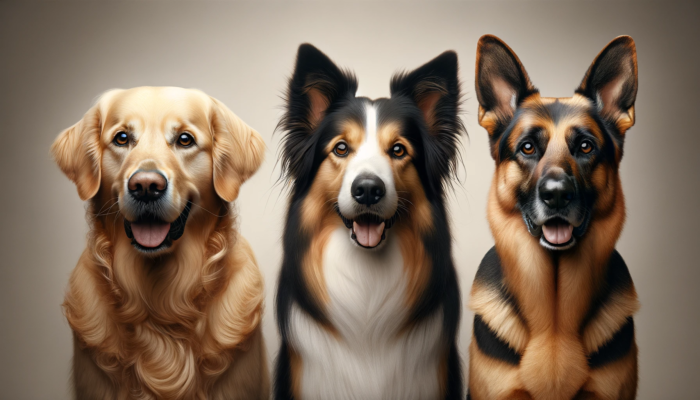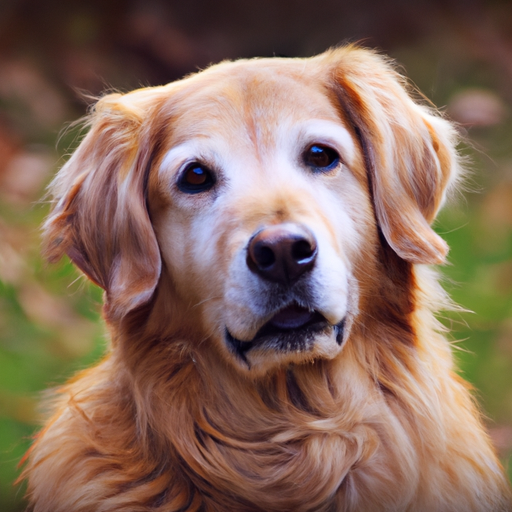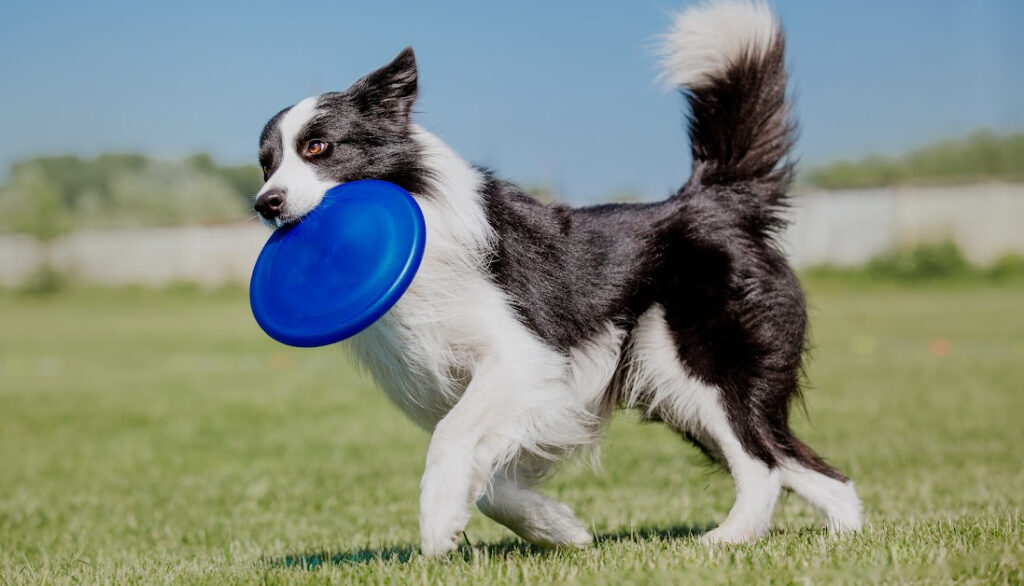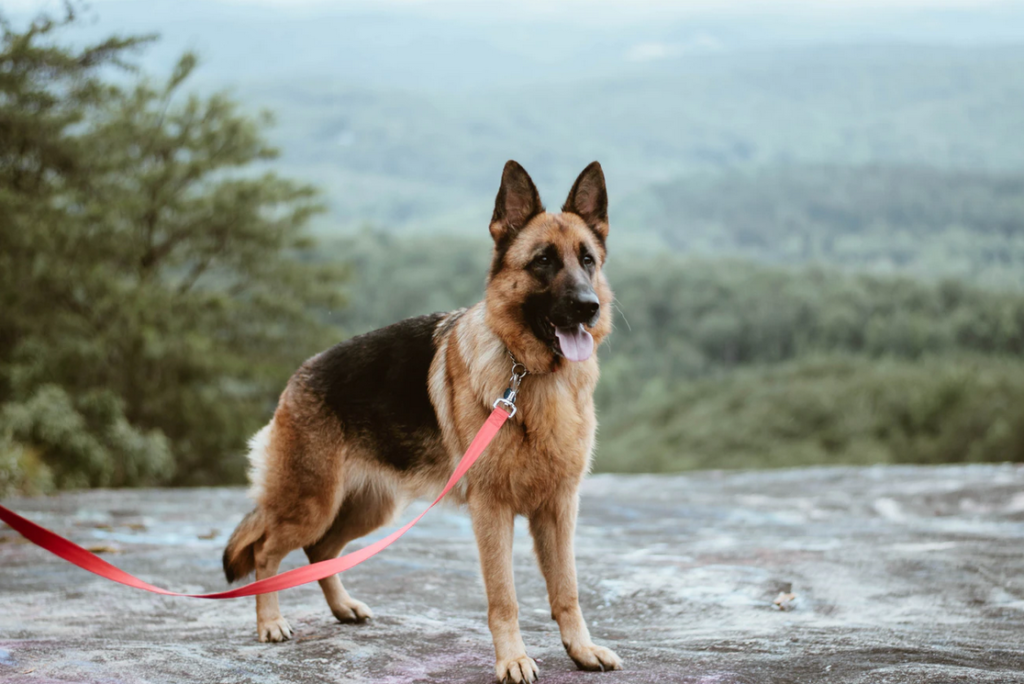Understanding Trainability in Dogs
If you’re like me, you love the companionship of a dog. They really are man’s best friend. But, have you ever wondered why some dogs seem to learn new tricks faster than others? Just like people, every dog is different and learn at their own pace. However, certain breeds are known for their high trainability.
The term “trainability” in dogs refers to their ability to learn, understand, and respond to training cues. It’s a measure of a dog’s intelligence, adaptability, and eagerness to please. Some breeds are naturally more trainable because they were bred for tasks that require quick learning and problem-solving. But remember, even within a breed, individual dogs can vary greatly in trainability.

Importance of Consistency and Patience in Training
No matter the breed, the key to successful dog training is consistency and patience. Dogs learn through repetition and positive reinforcement, and it takes time for them to understand and remember new commands. So, don’t be discouraged if your furry friend doesn’t get it right away. Your patience, consistency, and positive reinforcement will pay off in the end.
Factors Influencing Dog Trainability
Dog trainability is influenced by several factors, with breed characteristics often playing a significant role. Certain breeds like Border Collies, Poodles, and German Shepherds are known to excel when it comes to training, thanks to their inherent traits of intelligence and eagerness to please.
Besides breed characteristics, early socialization and training also have a significant impact on a dog’s trainability. Dogs that are exposed to various environments, people, and other animals at a young age tend to be more adaptable and trainable. Similarly, dogs that receive training from a young age often respond better to commands, showing the importance of starting training early.
As we delve into the most trainable dog breeds, bear in mind that every dog is unique, and your relationship with your pet can greatly affect their trainability. So, while this list may guide you, remember to factor in your own patience, consistency, and understanding into the equation. After all, training isn’t just about teaching commands—it’s about building a bond of trust, respect, and understanding with your dog.

Factors Influencing Dog Trainability
Have you ever wondered why some dogs seem to learn commands faster than others or why a specific breed is often associated with certain roles, like rescue work, therapy, or police assistance? It’s not just about the individual dog’s personality; breed characteristics and early stages of life play significant roles in a dog’s trainability. Let’s dive into these factors and see how they shape our furry friends’ learning abilities.
Role of Breed Characteristics
Each breed comes with its unique set of physical and mental attributes that make them more or less susceptible to training. For instance, Border Collies, famous for their intelligence and agility, are often regarded as one of the most trainable dog breeds. They were initially bred for herding, which requires swift decision-making and a high energy level, making them quick to understand and follow instructions.
On the other hand, breeds like the Bulldog, while beloved for their loyalty and affectionate nature, might require a bit more patience when it comes to training. This isn’t to say Bulldogs are less intelligent, but their laid-back demeanor and stubborn streak can sometimes slow the training process.
Impact of Early Socialization and Training
Beyond breed characteristics, the experiences a puppy has during its early stages significantly influence its trainability. Early socialization and training can make a huge difference.
Socializing a puppy means exposing it to a variety of people, environments, and other animals in a positive manner. This exposure helps puppies learn how to behave appropriately in different situations. A well-socialized dog is generally easier to train as they are less likely to be anxious or fearful, which can hinder learning.
Similarly, early training using positive reinforcement methods can establish a foundation for future training success. If a puppy learns from a young age that following commands leads to rewards, they are more likely to be responsive to training as they grow up.
Training: It’s More Than Just the Breed
While certain breeds are known for their superior trainability, remember, every dog is an individual. Two dogs from the same breed can have different learning speeds and responses to training based on their personalities and past experiences.
Remember, a dog’s trainability isn’t solely about how quickly they can learn a new trick or command. It also includes how they adjust to different environments, their willingness to cooperate, and their ability to learn from past experiences.
While the breed can give you a general idea of what to expect when it comes to trainability, the dog’s individual characteristics, early socialization, and training all have a significant impact. So, whether you’re looking at a highly trainable breed like the Border Collie, or a lovable Bulldog, remember that patience, consistency, and positive reinforcement are your best tools for training success.
I hope this section has given you valuable insight into the factors influencing dog trainability. As we move forward, we will be looking at some of the most trainable dog breeds in more detail. Stay tuned!
Top Trainable Dog Breeds: A Comprehensive List
If you’re looking for a canine companion that can quickly learn commands, tricks, and good behavior, certain breeds have got an edge. They are known as the most trainable dog breeds. Let’s take a look at them.
Border Collie: The Intelligent Herder
The Border Collie is often considered the most intelligent of all dog breeds. This breed was initially bred for herding, and they still carry the hardworking, intelligent traits that made them excellent at their job. Their intelligence coupled with their energy and eagerness to please, makes Border Collies incredibly trainable.
- Temperament: Energetic, Intelligent, Tenacious
- Trainability: High
- Best Suited For: Active families, Farm life
Training a Border Collie requires engagement and mental stimulation, so consider puzzle toys and advanced obedience training to keep their minds sharp.
Poodle: The Quick Learner
Don’t let the Poodle’s fancy haircut fool you. Poodles are incredibly smart and one of the most trainable dog breeds. They quickly pick up commands and tricks, making them a favorite for obedience competitions.
- Temperament: Intelligent, Alert, Active
- Trainability: High
- Best Suited For: Families, Apartment living
Poodles are also highly adaptable, making them excellent for various living situations. They’re good with children and other pets, and their hypoallergenic coats make them a great choice for allergy sufferers.
Training a Poodle should involve lots of praise and rewards, as they thrive on positive reinforcement.
As a responsible dog parent, it’s essential to remember that even the most trainable breeds need time, patience, and consistency. Training isn’t a one-time event but a continuous process throughout your dog’s life. So, keep at it, and soon you’ll have an obedient, well-behaved furry friend that is a joy to be around.
The Versatile German Shepherd
Known for their intelligence and obedience, German Shepherds stand out as one of the most trainable dog breeds. This breed is a favorite among law enforcement and search-and-rescue teams due to their incredible versatility, adaptability, and trainable nature.
German Shepherd: Obedience and Intelligence
German Shepherds are not only physically impressive, but they also possess a sharp intellect that sets them apart. Their keen intelligence enables them to pick up new commands swiftly and follow them through, making them one of the most trainable dog breeds.
What makes a German Shepherd particularly trainable is their inherent desire to work and please. These dogs have a rich history of being working dogs, which means they thrive when given tasks and jobs to do. They are quick learners and can be trained for a variety of tasks, from basic obedience commands to complex tricks and skills.
German Shepherds are also very obedient. They respect their human companions and are willing to follow instructions to a tee. This obedience, coupled with their high intelligence level, makes them an ideal breed for training.
Training Tips for German Shepherd Owners
Training a German Shepherd can be an enriching experience. Here are some valuable tips:
- Start Early: Begin training when your German Shepherd is a puppy. This is the stage when they are most receptive to learning new things.
- Consistency is Key: German Shepherds thrive on consistency. Be consistent with your commands, rewards, and training sessions.
- Positive Reinforcement: Always use positive reinforcement techniques such as treats, praises, and petting. This will encourage your German Shepherd to repeat the desired behavior.
- Socialization: Expose your dog to various environments, people, and other animals to build their confidence and ensure they can adapt to different situations.
- Patience: Training takes time. Be patient and never resort to harsh methods as it can harm your dog’s trust and confidence in you.
Remember, despite being one of the most trainable dog breeds, each German Shepherd is unique. What works for one might not work for another. It’s important to understand your dog’s personality and adjust your training methods accordingly. After all, training is not just about obedience, it’s about building a strong, respectful, and loving bond with your four-legged friend.

Labrador Retriever: America’s Favorite
When it comes to the most trainable dog breeds, the Labrador Retriever is often at the top of the list. This breed is not only America’s most popular dog breed, but it’s also renowned for its eagerness to please, which makes training a breeze.
Labrador Retriever: Eagerness to Please
Labrador Retrievers are known for their friendly and outgoing nature. They are incredibly social and love to be around people. This, combined with their high intelligence and eagerness to please, makes them highly trainable. They are always ready for a new challenge and quickly pick up new commands and tricks.
Labradors are also very adaptable. They can thrive in a variety of environments, from apartments to large homes with yards. This adaptability extends to training as well. Whether you’re teaching basic obedience commands, advanced tricks, or training them for specific roles like search and rescue, service, or therapy work, Labradors are up to the task.
Effective Training Techniques for Labradors
When it comes to training a Labrador Retriever, consistency and positive reinforcement are key. Here are some effective techniques:
- Start Early: Begin training your Labrador as a puppy. This is when they are most receptive to learning new things.
- Be Consistent: Consistency is crucial in dog training. Use the same commands and rewards for desired behaviors to help your Labrador understand what is expected.
- Use Positive Reinforcement: Labradors respond well to positive reinforcement. This means rewarding them with treats, praise, or playtime whenever they perform a desired behavior.
- Keep Training Sessions Short and Fun: Labradors have a lot of energy, but their attention spans can be short. Keep training sessions short, around 10-15 minutes, and make them fun to keep your Labrador engaged.
- Socialize Your Labrador: Expose your Labrador to different environments, people, and other animals. This will help them become well-rounded and adaptable, making training in different situations easier.
Training a Labrador Retriever can be a rewarding experience. Their eagerness to please and high trainability make them a joy to work with. With patience, consistency, and the right techniques, you can train your Labrador to be an obedient and well-behaved companion.
Golden Retriever: The Friendly Companion
Golden Retrievers are often cited as one of the most trainable dog breeds, and it’s not hard to see why. Known for their affectionate nature and eagerness to please, these dogs are not just friendly companions; they’re also remarkably trainable.
Sociability and Trainability
Golden Retrievers have a high sociability factor. They’re naturally inclined to interact with people and other dogs, which plays a significant role in their trainability. Their love of social interaction often translates to an eagerness to please their owners, making them more receptive to commands and training efforts.
One of the reasons Golden Retrievers are so trainable is their intelligence. They’re quick learners, able to pick up on commands and routines with relative ease. This, combined with their sociability and eagerness to please, makes them an excellent choice for first-time dog owners and families with children.
Best Practices for Training Golden Retrievers
When it comes to training Golden Retrievers, consistency is key. Here are some best practices to keep in mind:
- Start training early: Like many breeds, Golden Retrievers are most receptive to training in their puppy stage. The sooner you start, the better.
- Use positive reinforcement: Goldens thrive on praise and rewards. Always reward them for their good behavior and successful command execution.
- Exercise patience: All dogs, even the most trainable breeds, will have moments where they struggle with commands or exhibit unwanted behavior. Stay patient and reinforce training by repeating commands and routines.
- Consistency is key: Ensure everyone in the household is on-board and consistent with commands and training techniques. Inconsistent training can confuse your dog and hinder their progress.
The combination of a Golden Retriever’s sociability, intelligence, and eagerness to please makes them one of the most trainable breeds. Remember, the key to successful training is patience, consistency, and positive reinforcement. With time and dedication, your Golden Retriever will quickly become a well-behaved, obedient member of your family.
When considering the most trainable dog breeds, Golden Retrievers are undoubtedly high on the list. They’re sociable, intelligent, eager to please, and quick learners – a combination that makes them a joy to train.

Doberman Pinscher: The Loyal Protector
When it comes to the most trainable dog breeds, the Doberman Pinscher stands out as a shining example. Known for their incredible strength and obedience, these dogs are quick to learn and eager to please, making them one of the best choices for training.
Doberman Pinscher: Strength and Obedience
Doberman Pinschers are a breed that commands respect due to their physical strength and striking appearance. But behind that intimidating façade lies a loyal and intelligent dog that’s incredibly receptive to training. Their inherently obedient nature makes them one of the most trainable dog breeds.
One of the significant traits that contribute to Doberman’s trainability is their high-energy levels. They crave regular physical and mental stimulation, which makes them highly adaptive to various forms of training. They’re also intelligent, which allows them to understand and follow complex commands and learn from their mistakes quickly.
Another key trait of the Doberman Pinscher is its loyalty. These dogs are known for their protective nature and their strong bond with their human companions. This loyalty is often a driving force for their willingness to obey and please their owners, making them even more trainable.
Training Strategies for Doberman Pinschers
Training a Doberman Pinscher is an enjoyable and rewarding experience, but it does require the right approach. Here are some essential strategies to consider:
– Early Socialization: Like most dogs, Doberman Pinschers benefit from early socialization. Introducing them to a variety of environments, people, and other animals from a young age helps them become more adaptable and less anxious in different situations. This adaptability can significantly aid training.
– Structured Training: Dobermans respond well to structured learning environments. Regular training sessions with a routine will help them understand what’s expected of them.
– Positive Reinforcement: This breed thrives on praise and rewards. Using positive reinforcement techniques such as treats, toys, or praises can make training sessions more effective and enjoyable for your Doberman.
– Consistency: Consistency is vital in training a Doberman Pinscher. These dogs learn best when rules and routines are kept consistent.
Doberman Pinschers are a standout breed when it comes to trainability. With their obedience, intelligence, and loyalty, they are a joy to train. However, they require consistency and patience from their owners. With the right approach, there’s no limit to what these loyal protectors can learn and achieve.
Shetland Sheepdog: The Agile Mind
The Shetland Sheepdog, often affectionately referred to as the Sheltie, is one of the most trainable dog breeds, landing a spot on our list due to its intelligence and responsiveness. This breed originated in the Shetland Islands of Scotland where they were used for herding sheep, a task that required quick thinking, agility, and keen responsiveness.
Shelties have a remarkable ability to understand and remember commands, often after just a few repetitions. Their intelligence translates into high trainability, and they usually score exceptionally well in obedience and agility competitions. They also have a strong desire to please their owners, which motivates them to learn and obey commands.
Tailoring Training for Shetland Sheepdogs
While Shetland Sheepdogs are intelligent and eager to please, their training should still be tailored to meet their breed’s specific needs and characteristics. Here are a few tips to help you train your Sheltie effectively:
- Positive reinforcement: Like any other breed, Shelties respond well to positive reinforcement. Rewarding them with treats, praises, or playtime when they follow a command correctly can encourage them to keep up the good work.
- Early socialization: Shelties can be a little reserved, so it’s important to expose them to different people, places, and experiences from a young age. This can build their confidence and reduce the likelihood of fear-based behavior problems in the future.
- Consistency is key: Shelties are quick learners, but they also require consistency in training. Make sure to use the same commands and rewards to avoid confusing them.
- Stimulation: Shelties are highly intelligent, which means they need mental stimulation as much as physical exercise. Training sessions that challenge their minds can keep them interested and engaged.
Training a Shetland Sheepdog can be a rewarding experience. Their intelligence and eagerness to please make them highly trainable, but remember that every dog is an individual. Tailoring your approach to your dog’s personality and needs can bring out the best in them.
Wrapping Up
Whether you’re an experienced dog owner or a first-timer, remember that patience, consistency, and positive reinforcement are the cornerstones of successful dog training. This holds true for all breeds, including the agile and intelligent Shetland Sheepdog. As one of the most trainable dog breeds, Shelties can offer a rewarding and enriching pet ownership experience.
Stay tuned as we continue to explore the world of dog training with other highly trainable breeds. Our next focus will be the small but mighty Papillon. Remember, no matter the breed, your furry friend is capable of learning amazing things with the right guidance and a little bit of patience.
Frequently Asked Questions
Q1: What are some of the most trainable dog breeds?
A: Some of the most trainable dog breeds include Border Collies, Poodles, German Shepherds, Golden Retrievers, and Labrador Retrievers.
Q2: Why are some dog breeds easier to train than others?
A: Some dog breeds are easier to train due to their inherent traits. For instance, Border Collies are known for their intelligence and eagerness to please, which makes them highly trainable. Similarly, Poodles are known for their intelligence and adaptability.
Q3: Does the size of the dog affect its trainability?
A: Size does not necessarily affect a dog’s trainability. Both large and small breeds can be highly trainable. What matters more is the individual dog’s temperament, intelligence, and willingness to please.
Q4: How can I make my dog more trainable?
A: Consistent, positive reinforcement training methods are often the most effective for making your dog more trainable. It’s also important to start training your dog at a young age and to be patient and persistent.
Q5: Are there certain tricks that are easier to teach certain breeds?
A: Yes, certain breeds may find some tricks easier to learn than others due to their physical abilities and natural instincts. For example, retriever breeds may find fetch-related tricks easier, while herding breeds may excel at agility-based tricks.
Dr. Candy, a holistic veterinarian and certified raw dog food nutrition specialist, graduated from Oklahoma State University in 2009 with a DVM and has since specialized in companion animal nutrition, advocating for species-specific diets. With a background in wildlife rehabilitation and oil spill response, she combines holistic health and conventional medicine in her unique approach to treating chronic diseases, allergies, and autoimmune conditions in pets. As the owner of a veterinary practice in Colorado and an author, Dr. Candy is dedicated to educating pet parents and improving the health and happiness of animals.




